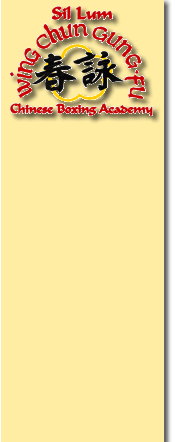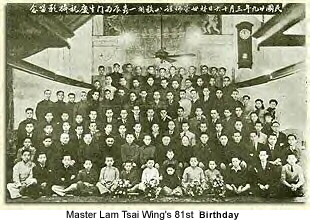

Hung Gar Hand Forms (History continued)
Kung Ji Fook Fu Kuen (Taming the Tiger Form)
The foundation of all other Hung Gar forms. The transliteration
of Kung in this specific instance refers to the Chinese character I and is
therefore sometimes interpreted as the "I Shaped Subduing the Tiger Form
". There are many other translations: "Cross Tiger Fist Form"
and "Taming the Tiger Form".
This is the oldest form in Hung Gar Kung Fu believed to have been developed
by Hung Hei Gwan after his intense training with his Sifu Abbot Jee Shim.
This form teaches the practitioner the basic stances and builds his foundation
through emphasis on the horse stance as well as developing and enhancing one's
breathing capacity.
This is the longest form in Hung Gar and is one of the hardest. It is while
the student is learning this form that his character, persistence and determination
to learn the system are assessed. His patience is also put to the test time
and time again with this form.
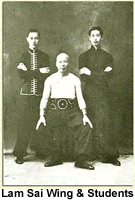 Fu Hok Suerng Ying Kuen (Tiger
Crane Form)
Fu Hok Suerng Ying Kuen (Tiger
Crane Form)
This is the most famous and popular of the Hung Gar
forms and is said to have been developed by Wong Fei Hung. The Tiger/Crane
form combines the black tiger and the white crane with the 1000 pound horse
stance, iron bridge techniques, five elements theory and the shadow-less kick
(mo ying guerk).The form stresses the cultivation of the Tiger(hard) and Crane(soft)
as well as a balance(yin/yang theory) between the two complementing each other
in the form. While the Tiger is utilized for teaching one to refine his physical
entity (power), dynamic tension breathing skills and courage. The Crane develops
whipping power, evasive tactics, waist movement, and calmness of the spirit
and balance.
The Tiger form of training provides the hard or external methods of Hung Gar
while the Crane form provides the soft or internal balance between the two.
Sup Ying Kuen (Ten Form
Fist)
This is an advanced form featuring the five traditional animals of the Shaolin
Temple, the Dragon, Snake, Tiger, Leopard, and Crane. It also contains the
five elements (wood, water, metal, earth & fire) found in Chinese philosophy
each of the animals teaches the practitioner an important lesson.
The Dragon (Lung)
teaches internal training in Hung Gar. It is the first animal represented
in the form. The Dragon is a spiritual and supernatural creature and transcends
from the easily understood real world. The power of the Dragons strength can
appear and disappear at will. Its domain is therefore internal power and spirit.
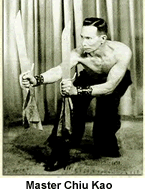
The Snake (Say) trains the fingers and is for striking the vital points on an opponent's body. It is utilized in the training and manipulation of Chi (Vital Energy). It teaches pinpoint hitting of vital areas. The Practitioner focuses his Chi all the way up to his fingertips in order to deliver and generate power correctly.
The Tiger (Fu) is designed to strengthen the constitution and has a fierce spirit. This animal emits ferocity, courage and strength since it is the strongest of the animals. Dynamic tension, vigorous and strong hand techniques in the form of Tiger claws is what characterizes this animal.
The Leopard (Pow)
is the embodiment of speed and power. It has swift penetrating attacks. The
Leopard fist strikes always involve more than one strike and always at extremely
quick speeds. 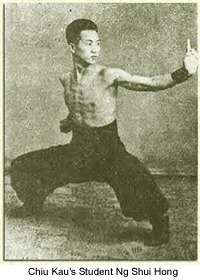
The Crane (Hok) stresses balance, quick foot movements, pecking, hooking and deflecting movements. It is a lively animal whose essence can be seen in its beak attacks and pecking motion.
The Metal or Gold element (Gum) involves a strong slow stretching power. The entire arm is used as a solid unit. The elbows are always bent slightly in this movement, as there is less susceptibility to the arms being broken.
The Wood element (Mok) is a simultaneous block and strike and is the shortest arm movements in Hung Gar. This element teaches long and short arm sequences.
The Water element (Soy) are strikes which are of a constant nature. A series of battering blows similar to the pounding of ocean waves upon the shores. It is the swinging motion of the practitioner's arms which are the source of the Water element's power.
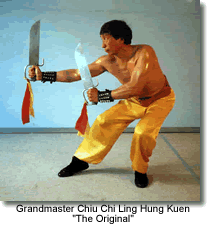 The
Fire element (For)
is characterized by a straight punch. Its more common name is the Sun Punch
because the fist forms the character Sun in Chinese characters. The sun is
a fiery mass.
The
Fire element (For)
is characterized by a straight punch. Its more common name is the Sun Punch
because the fist forms the character Sun in Chinese characters. The sun is
a fiery mass.
The Earth element (Tow) is the last of the elements and closes the form. It develops a strong foundation. (Boxing is rooted in the feet, developed in the legs, directed by the waist and is expressed through the hands). Since the practitioner's foundation is so strong, he is capable of delivering some very destructive blows.The Dragon, Snake, Tiger, Leopard, and Crane are said to give the practitioner five ways to manipulate and use his strength while the Wood, Fire, Gold, Water and Earth elements are said to give him five ways to generate and transform the power in each of these forms.
Tit Sin Kuen (Iron Wire Form)
This form was created by Tit Kiu Sam whose real name Wat Luin Kwan, who was known as one of the best martial artists in the history ofChina. He was one of the famous Ten Tigers of Kwangtung. Through the years he passed his knowledge of the set down to one of his students, Lam Fook Sing, who passed this knowledge to Wong Fei Hung.
This form is the highest set taught in the Hung Gar system.
It takes the practitioner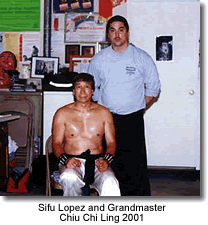 into the realm of internal Kung Fu training, which is the ultimate goal in
Chinesemartial arts.Tid Sin's limited footwork is based solely upon the movements
and spirit of the Dragon coupled with vibrating sounds and various intonations
of breath controlwith twisting movements which stimulate the internal organs.
into the realm of internal Kung Fu training, which is the ultimate goal in
Chinesemartial arts.Tid Sin's limited footwork is based solely upon the movements
and spirit of the Dragon coupled with vibrating sounds and various intonations
of breath controlwith twisting movements which stimulate the internal organs.
Each emotion (Happiness, Anger, Sadness, Sorrow and Fear) is said to be translated into a breathing tone producing different vibrations, which affect different organs. From the breathing sounds comes a strong type of power, which is emitted from within the practitioner.
There are twelve types of training methods (sup yee kiu sau) contained in this form. They are:
Hard(Gong), Soft(Yau), Crowding(Bik), Linear(Jik), Dividing(Fan), Steady(Ding), Inch(Chyun), Lift(Tai), Reserve(Lau), Send(Wan), Control(Jai), and Finalize(Deng). These twelve types of training are designed to control and improve the internal functions of the organs. It is a dynamic tension exercise used to increase the flow of Chi throughout the body. It is an efficient means of body building and stamina development.
The combined pugilism of the Tiger and Crane styles, otherwise
known as Hung Gar Kung Fu, is a southern Shaolin system designed to strengthen
the physical constitution (the bones of the body) as well as the sinews, breathing,
and spirit. It is a most respected system whose training concepts are steeped
in morality, rigidly traditional and uncompromising in preserving the original
standards of Shaolin Kung Fu.
|
|
 Impromptu
Demo by Grandmaster Chiu Chi Ling and Sifu Lopez Impromptu
Demo by Grandmaster Chiu Chi Ling and Sifu Lopez |
 Grandmaster
Chiu Chi Ling with Students at his home near San Francisco Grandmaster
Chiu Chi Ling with Students at his home near San Francisco |










